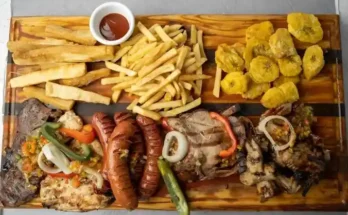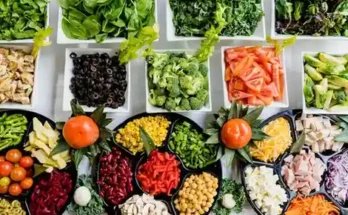Expired food is not necessarily harmful to health. To hunt food waste, here is the information you need to know!
The shelf life of dry foods is a real headache for most of us. We know that foods can always be consumed after their best before date (DLUO) which is different from the best before date (DLC)…
…but until when?
Let’s make the difference by explaining these different notions of deadlines and then we will see more precisely how to store dried shrooms and other foods. And also how long each food can be kept.
What are the differences between DLUO, DLC and DMM?
Let’s start by distinguishing these two notions which will allow you to better understand what can be kept and what cannot be kept.
The DLUO is the “Best Use Deadline” . This means that after this date, the food will not expire but will probably have lost some of its flavor. However, it will still be good for consumption. It is used for foods that are not quickly perishable, such as dry foods.
The DLC is the “Use by Date”. It is different in the sense that it is used for foods that are quickly perishable, such as meat, fish or any fresh produce. After this date, the food can be dangerous for health. DLC is often referred to as “best before” or “best by”.
The MDD is the “Minimum Durability Date”. It’s exactly the same as DLUO, it’s just a new term that replaced the old one since 2015.
The expiry date of food in its original packaging
When foods are kept in their original packaging, their best-before date is generally defined by the producer. This DLUO wrongly called expiry date indicates the period during which the food keeps all its nutritional and taste values. Thus, they can be consumed after this date without health risks.
Here is a list of the most searched foods (press ctrl + F to search for a food):
- The pasta can be eaten two years after its BBD.
- Rice can also be consumed two years after its BBD.
- The chips are still edible after a few months past their best before date. Still, the bag must remain closed.
- Expired Polenta can still be consumed for years after its BBD if the package has not been opened
- Stale flour is technically still good for years. Be careful though, food moths love flour… check carefully when you open the packet of flour.
- Expired chocolate can be consumed up to 2 years after its expiry date. However, it will have lost a lot of its flavor.
- Expired tea can be consumed up to 2 years after its expiry date if it has been well preserved. Be careful, it may have lost all its flavor… not very interesting.
- Same fight for coffee which can be consumed up to 2 years after its expiry date if it is well preserved.
- Expired cornstarch does not exist, it is a product that you can use all your life if it has been well preserved.
- Dry sausage can be kept for a few weeks to a few months depending on the storage conditions. Taste a small slice to find out.
- Sugar doesn’t expire either…you can use it years after its BOD.
- Expired almond powder can be consumed 1 to 2 years after its DDM. Be careful though, this kind of powder tends to quickly lose its taste.
How long can you keep a can after the date?
Regarding canned foods, as long as the can is not dented or swollen, they can still be eaten one year after MDD.
Two years after the DDM of your chocolate, you can still eat it. However, having lost all its flavor, it is rather recommended to use it to make a dessert.
Legumes and cereals, in general, are eaten several years after their BBD. To keep their taste and freshness, it is recommended to keep them in a tightly closed jar.
Shelf life of pulses
Do you have expired lentils, chickpeas or dried beans at home and not sure if you can eat them?
Good news, pulses never expire (same for legumes)! Because they contain no water, you can eat them years after their expiry date if they have been well stored away from sunlight, humidity and insects.
Increase shelf life with suitable containers
Several containers suitable for storing dry foods make it possible to extend their use-by date by several years.
PET bottles offer a good seal against humidity or oxidation. They make it possible to store products such as rice, dried beans, wheat or corn. Food stored in plastic bottles (PET) must have a maximum humidity of 10%.
Be careful, if food with a high humidity rate is stored in plastic bottles, there is a risk of botulism poisoning.
You can also use plastic boxes. These must be raised to a minimum height of 1.5 cm to allow air to circulate underneath. Furthermore, it is recommended not to stack more than three plastic boxes to ensure that the plastics remain in good condition.
Another way to store dry foods is the foil pouch. Designed to store food with a humidity level of 10% or less, these bags are fitted with a layer of food-grade plastic inside which prevents any contact between the aluminum and the food. These pouches must be sealed with heat sealers. As an example of foil bags to choose from, Mylar bags are highly recommended. You can find it on Amazon.
More common, glass jars and metal boxes with seals on the lid allow dry food to be kept for much longer.
Stored in these containers and in the right conditions, dry foods such as wheat, white rice, corn, pasta, oatmeal or red beans can be stored for 30 years! In addition, foods such as fat-free milk powder or dehydrated carrots can last for 20 years.
Storage conditions to better preserve your food
Although most dry foods can be consumed several months or even years after their best before date, this possibility depends above all on the storage conditions.
Products should be kept at a maximum temperature of 24°C and protected from light. To do this, avoid exposing your stocks to the sun or placing them in household appliances such as the fridge, stove or oven, microwave or traditional.
Stock storage areas should be dry and containers should be high up. In addition to preventing moisture, these measures will help you eliminate the risk of rodents and insects spoiling your foodstuffs. In the same way, insert a sachet of food oxygen absorber in each of your containers. You can easily get it in drugstores or on the internet.




